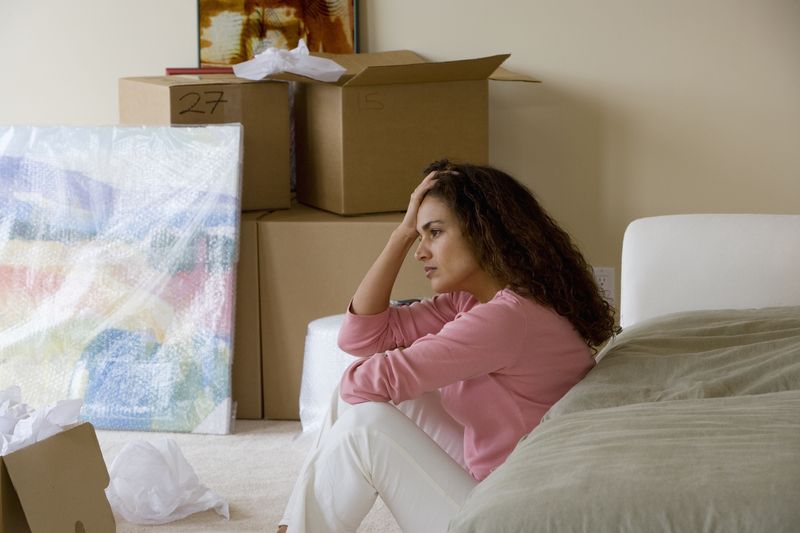Packing Essentials for a Flawless House Transition
Posted on 18/05/2025
Packing Essentials for a Flawless House Transition
Relocating to a new home can be thrilling, but it can also feel daunting without the right preparation. Ensuring a smooth and flawless house transition hinges on one crucial aspect: packing efficiently and thoughtfully. This comprehensive guide covers everything you need to know about packing essentials for a house move--helping you get organized, save time, and minimize stress.

Why Proper Packing is Critical for a Seamless House Move
Proper packing forms the backbone of a stress-free move. Effective packing not only protects your belongings but also helps you settle into your new home effortlessly. A well-executed packing strategy ensures:
- Efficient loading and unloading of belongings
- Minimal risk of damage to your valued items
- Easier unpacking, making your new place feel like home sooner
- Time and cost savings during the entire moving process
Creating Your Ultimate House Move Packing Checklist
Before you start gathering boxes, having a comprehensive moving checklist is essential for a flawless house transition. Organize your checklist into categories to cover every element of the move. Some fundamental questions to guide your list include:
- What items are essential for daily life?
- Which belongings are delicate or valuable?
- Are there any seasonal items that can be packed early?
- What supplies are needed for safe and effective packing?
The Most Crucial Packing Supplies for a Home Move
Gathering the right packing supplies is a top priority for anyone focusing on packing essentials for a seamless house transition.
Must-Have Moving Boxes and Containers
- Sturdy Cardboard Boxes: Opt for various sizes--small for books and heavy items, medium for kitchenware, and large for linens and clothing.
- Plastic Bins: Ideal for fragile items, electronics, and storage items that will remain packed post-move.
- Wardrobe Boxes: These allow you to move your clothes on hangers without folding or wrinkling.
- Dish Packs: Special boxes with dividers designed for dishes and glassware.
- Specialty Boxes: Use TV boxes, picture/mirror boxes, and document-safe containers for oversized or sensitive items.
Essential Protective Packing Materials
- Bubble Wrap: For cushioning breakable items such as glass, china, and antiques.
- Packing Paper: Inexpensive and easy-to-use for wrapping dishes and filling empty spaces in boxes.
- Foam Peanuts or Foam Sheets: Excellent for filling gaps and preventing items from shifting.
- Moving Blankets: Ideal for protecting furniture, artwork, and appliances from scratches.
Labelling and Sealing Supplies
- Permanent Markers: Use bold colors for easy visibility.
- Pre-printed labels or color-coded tape for quick identification of rooms or item types.
- Packing Tape Dispenser: For fast and secure sealing of boxes.
- Fragile Stickers: Mark glassware, electronics, and delicate items clearly.
- Inventory Sheets: To keep a log of box contents for organized tracking during the move.
Strategic Packing Tips for a Perfect House Transition
Knowing what to bring and how to pack is the heart of a flawless house transition. Use the following strategies to maximize efficiency and minimize hassle:
Declutter Before You Pack
One of the most important but often overlooked moving essentials is decluttering. Donate, sell, or discard items you no longer use. This reduces the volume of things to transport, saving on time, effort, and moving costs while ensuring you only bring what you truly need into your new home.
Pack Room by Room
- Start in Least-Used Rooms: Begin packing guest rooms, storage spaces, or seasonal areas first.
- Label Boxes by Room: Not only does this streamline unpacking, but it also helps movers place boxes in the correct locations on moving day.
- Keep Essentials Separate: Pack a specific "open first" box with items you'll need immediately after arrival.
Wrap, Protect, and Cushion
When it comes to packing essentials for a house move, protection is key. Wrap fragile items individually, use plenty of cushioning, and don't overload boxes to prevent breakage. Use moving blankets for furniture and appliance corners, and use wardrobe boxes for hanging clothes to avoid folding or wrinkling them.
Use Space Wisely
- Fill Every Gap: Stuff socks, towels, or linens in empty box spaces to prevent shifting.
- Stack Plates Vertically: Plates and other flat breakables are less likely to break when packed upright and cushioned well.
- Utilize Suitcases: Roll clothes instead of folding, maximize suitcase space, and transport heavier items with wheels for easier handling.
Ultimate Checklist for Packing a House Seamlessly
Here's an actionable, step-by-step packing checklist to make your house transition flawless:
- 8 Weeks Before Move:
- Inventory all belongings
- Start compiling packing supplies
- Sort and begin decluttering
- 6 Weeks Before Move:
- Pack out-of-season items and storage areas
- Label boxes by room and content using bold markers
- Securely store important documents separately
- 4 Weeks Before Move:
- Pack rarely used kitchen gadgets, extra linens, decor
- Wrap fragile items and use plenty of cushioning
- Disassemble furniture you seldom use
- 2 Weeks Before Move:
- Continue packing all non-essential items
- Confirm moving day details with movers
- Prepare an essentials bag/box for first night
- Final Week:
- Pack daily essentials last (kitchen items, toiletries)
- Defrost freezer and clean main appliances
- Ensure all boxes are correctly labelled and sealed
- Moving Day:
- Do a last-minute walkthrough
- Double-check all rooms, closets, and storage areas
- Seal and load boxes organized by room and priority
Protecting Fragile and Valuable Items
Ensuring the safety of delicate possessions is a crucial part of packing essentials for successful house transitions. Here's how to protect your most cherished items:
- Wrap each item in bubble wrap or foam sheets
- Use dish boxes with dividers for glassware and plates
- Fill all empty space with packing paper or fabric
- Label each box clearly as "Fragile"
- Insure valuable and irreplaceable items
Specialty Tips for Art, Electronics, and Antiques
- Artworks: Use custom-size picture boxes, corner protectors, and acid-free paper for fine art.
- Electronics: If possible, pack in original boxes, otherwise use sturdy boxes with ample padding and seal with anti-static bubble wrap.
- Antiques: Wrap individually, document their condition, and consider hiring professionals for high-value pieces' transport.
First Night and Moving Day "Survival Kit"
The first 24 hours in your new home can be chaotic. Have a separate, easily accessible "first night essentials box" ready--it's perhaps the most important of all house move packing essentials. Include:
- Toiletries and personal care items
- Basic cleaning supplies
- Fresh bedding and towels
- Essential kitchen items (plates, utensils, coffee maker)
- Chargers, devices, and basic tools (screwdrivers, scissors, tape)
- Change of clothes
- Important documents & medications
- Snacks and water
Organizing Paperwork and Personal Records
Among your core packing essentials for a flawless house transition are crucial documents. Misplacing legal papers, birth certificates, property deeds, and moving contracts can cause headaches and delays. Always:
- Gather and organize important paperwork in a labelled, waterproof file box
- Keep your documents with you during the move, not on the moving truck
- Make digital and/or physical copies as a safeguard

Streamlining Unpacking at Your New Home
The real beauty of meticulous packing is revealed during unpacking in your new home. Some critical tips as you begin the process:
- Prioritize essentials: Unpack your first-night box and daily items first
- Go room by room using your labelled boxes and inventory sheets
- Break down boxes as you empty them to reduce clutter
- Recycle or donate packing materials for an eco-friendly move
Final Thoughts: Mastering Packing Essentials for a Smooth House Move
Proper packing and preparation are non-negotiable steps for any successful house transition. By preparing a carefully planned packing checklist, assembling essential supplies, and deploying smart packing strategies, you'll be able to streamline your move and minimize stress. Remember to label clearly, protect all valuables, and keep key items close at hand for the first day in your new home.
In summary: Investing time and effort into your packing process lays the foundation for a truly flawless house transition--allowing you and your family to settle quickly, safely, and happily into your new space!



